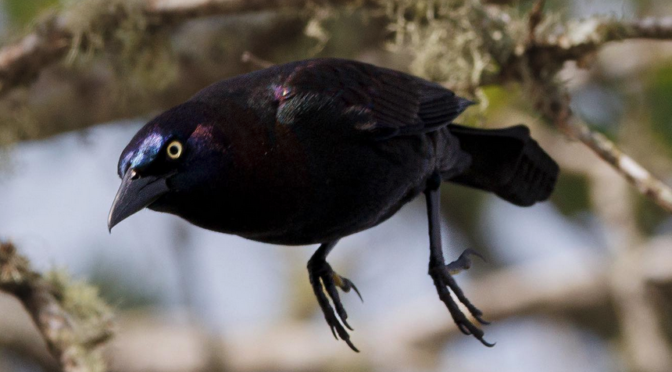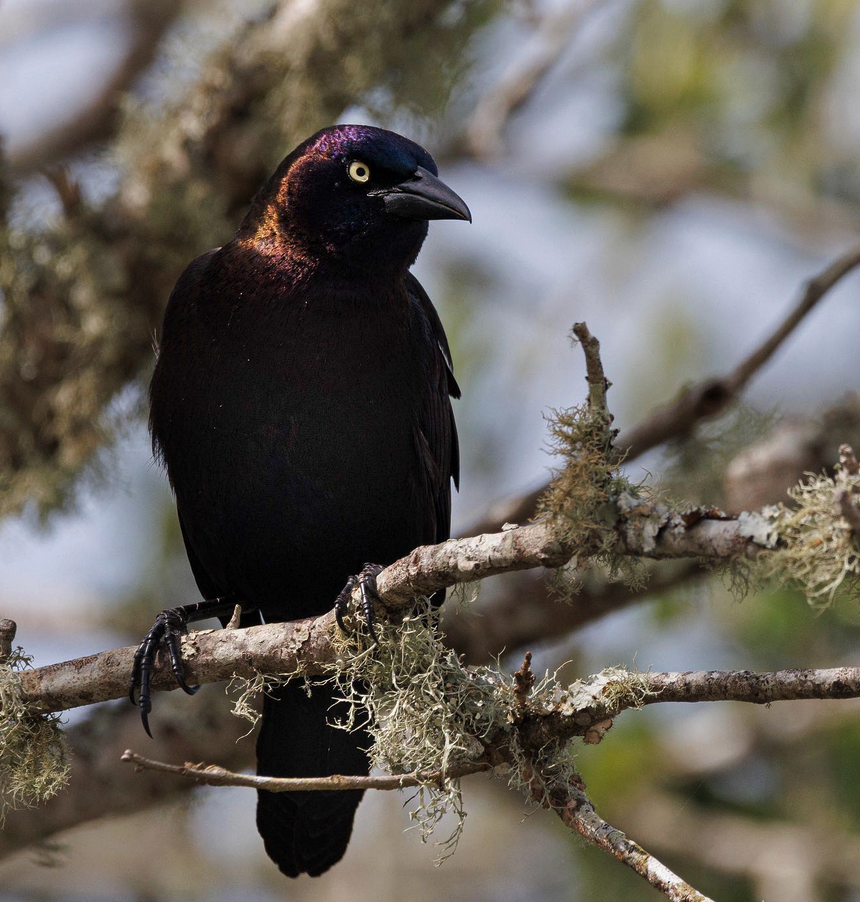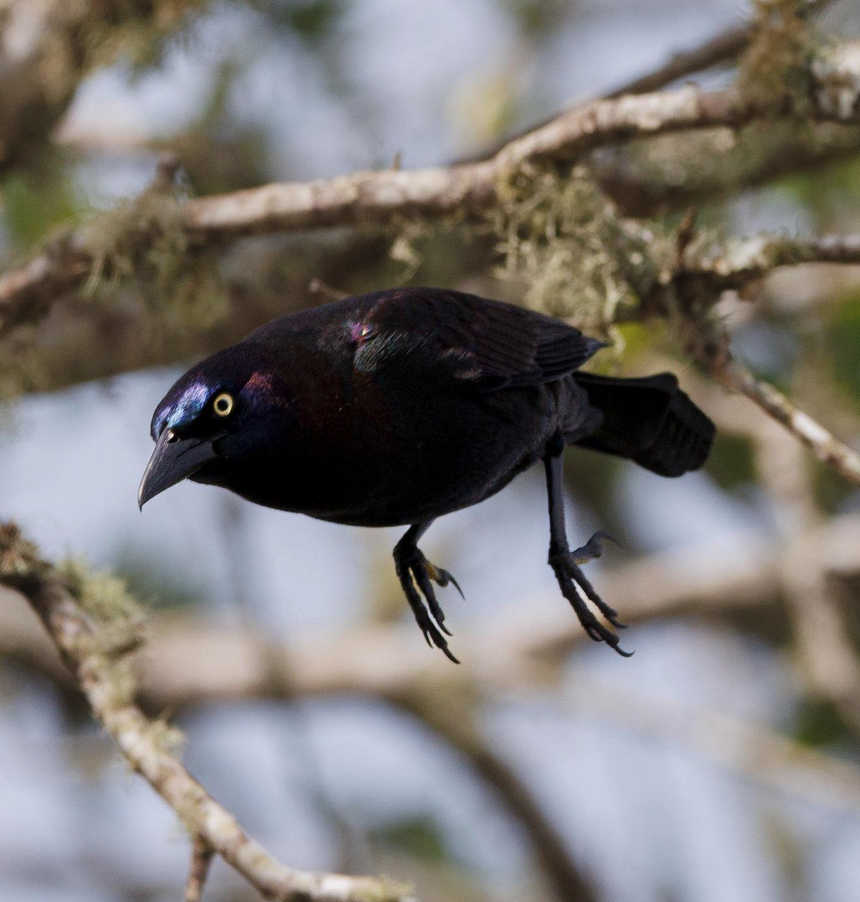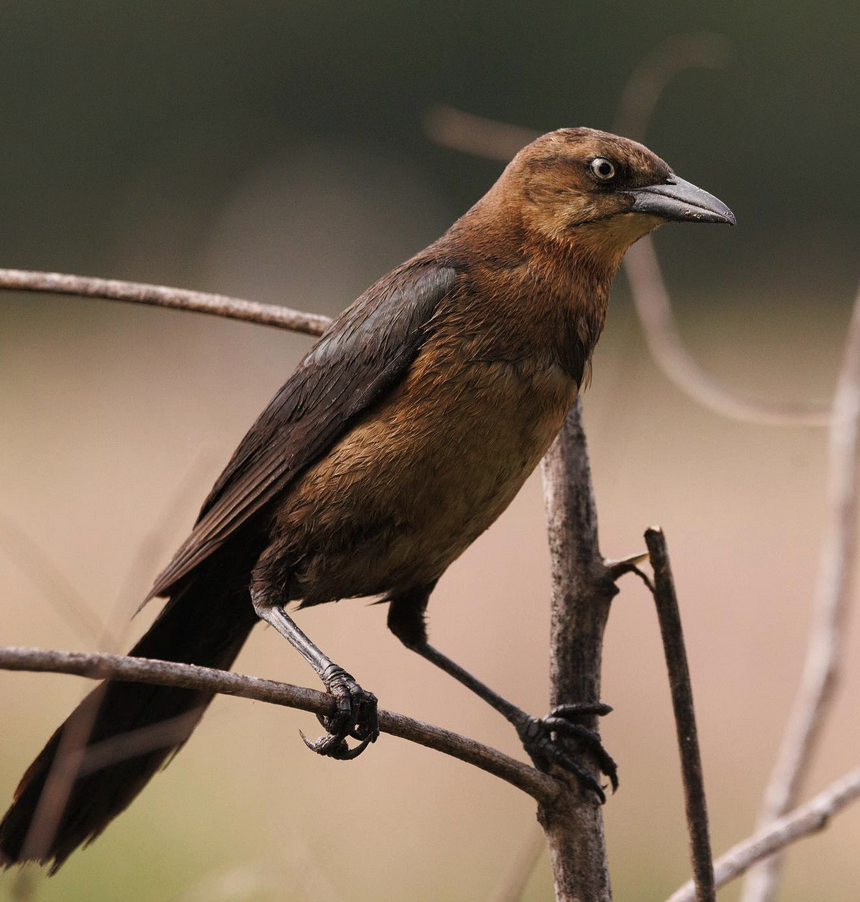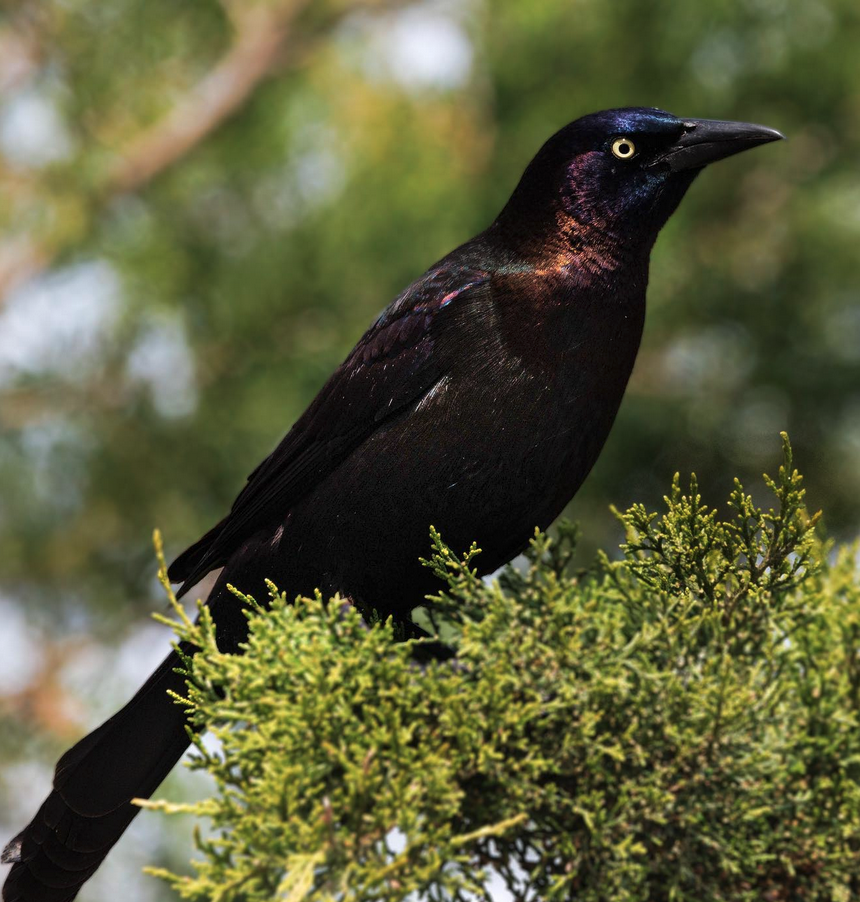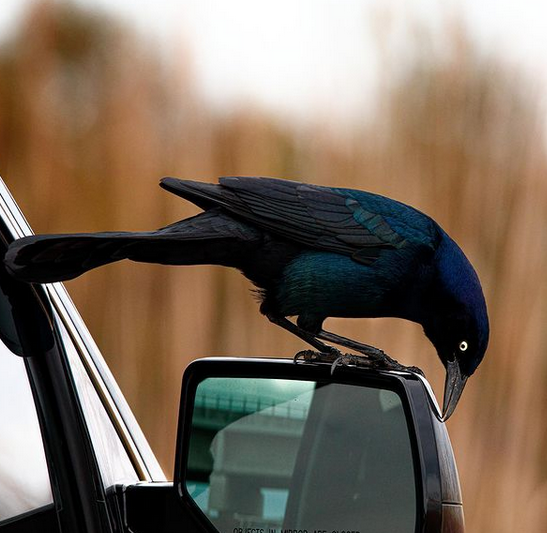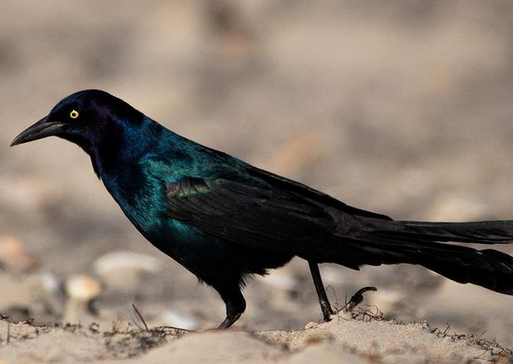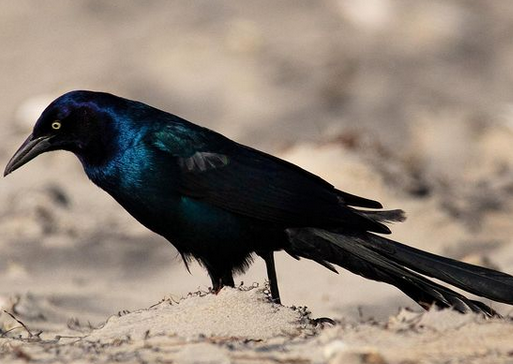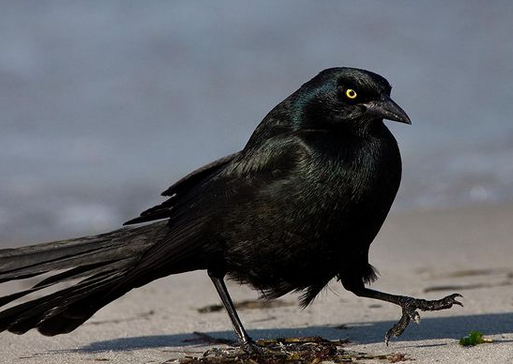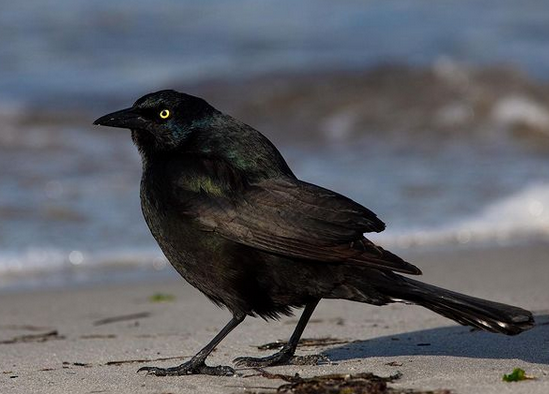By Sally Siko
Though they are a common sight along North Carolina’s beaches, I love taking photos of the Boat-tailed Grackles.
I spotted this handsome fella snacking on some sort of crustacean while birding in the OBX this past weekend.
It was neat to watch him pick his way through the seaweed that had washed up on the cove. The waves crashing just inches away, the grackle remained unbothered as it finally found a meal and gulped it down.

Boat-tailed Grackles are a permanent resident of North Carolina boasting a wide range that stretches from the coastline of New York, down into Florida and into east Texas.
They are found almost always near sources of water such as wetlands and coastal marshes, waterfowl impoundments, lakes, rivers, both the Atlantic and Gulf beaches, ponds and mudflats.


These sharp looking members of the blackbird family are omnivorous with a diet of coastal fare that consists of mussels, shrimp, frogs, aquatic insects, snails, crayfish, and even crabs.
When grabbing a meal away from the water, they will feed on grasshoppers, caterpillars, and the eggs of other birds.
During the winter months, they will supplement their diet with different kinds of seeds and grain to make up for the protein loss that may occur when their favorite prey becomes scarce in cold weather. This is why you’re likely to see more of them at your feeders in the wintertime if you live on the east coast.
When this happens large flocks can quickly inundate a backyard and go through all the available bird seed in a flash.
For that reason some people consider them pests but I think they are beautiful!
Photos by @sally_siko of @bestlife_birding on my mighty mirrorless monster, the @canonusa #R5


